In The Beginning is an exploration game in space. WASD to move, click to fly to another body. You get points for exploring new undiscovered celestial bodies. You will lose if you fall into a star.
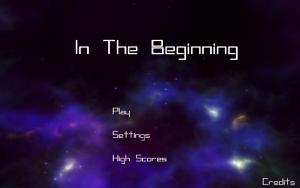
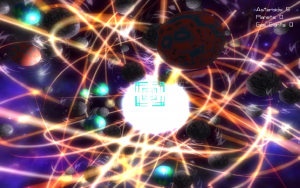
Mac Build
Experimental Game Design – Postgaming
Experimental Game Design – Postgaming
In The Beginning is an exploration game in space. WASD to move, click to fly to another body. You get points for exploring new undiscovered celestial bodies. You will lose if you fall into a star.


Mac Build
Author: Roger Liu
Description: Pakaplunk is an atmospheric top down platformer which utilizes depth. As the ball rolls over the tiles, the ambient background music evolves and a collage of colors is formed, painting a multi-layered sprite in a visually striking way.
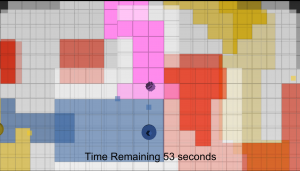
Download Link: https://drive.google.com/file/d/0ByL0e-EYvAoxMzh4dm0tN3pYWTA/view?usp=sharing
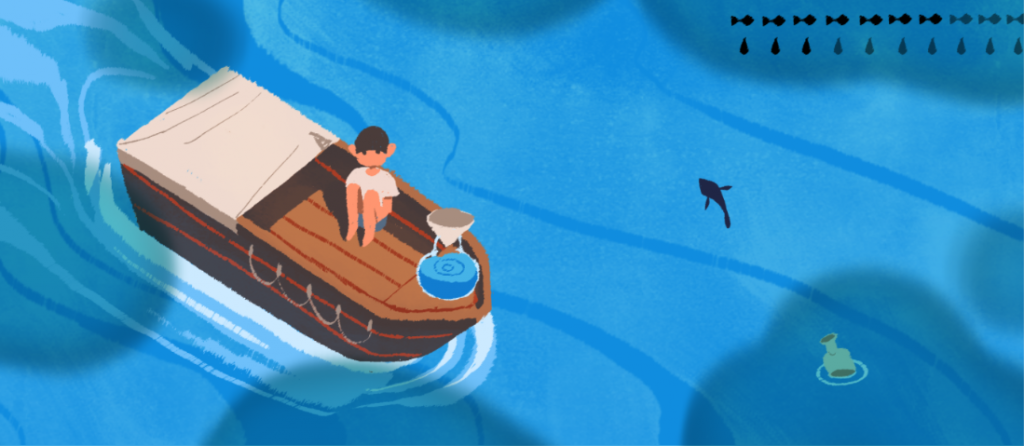
A relaxing survival game where you float along the underwater ruins of a world and receive messages from an unknown stranger.
By: Kristin Yin & Jason Ma
A co-op escape the room game. You and your partner are stuck in a mysterious room. You need to help each other out to find clues, in order to escape.
Instructions: You will need 2 computers (and partner of course) with one computer playing room1 and the other playing room2. The rules are you can talk to each other, but you are not allowed to look at each other’s screen.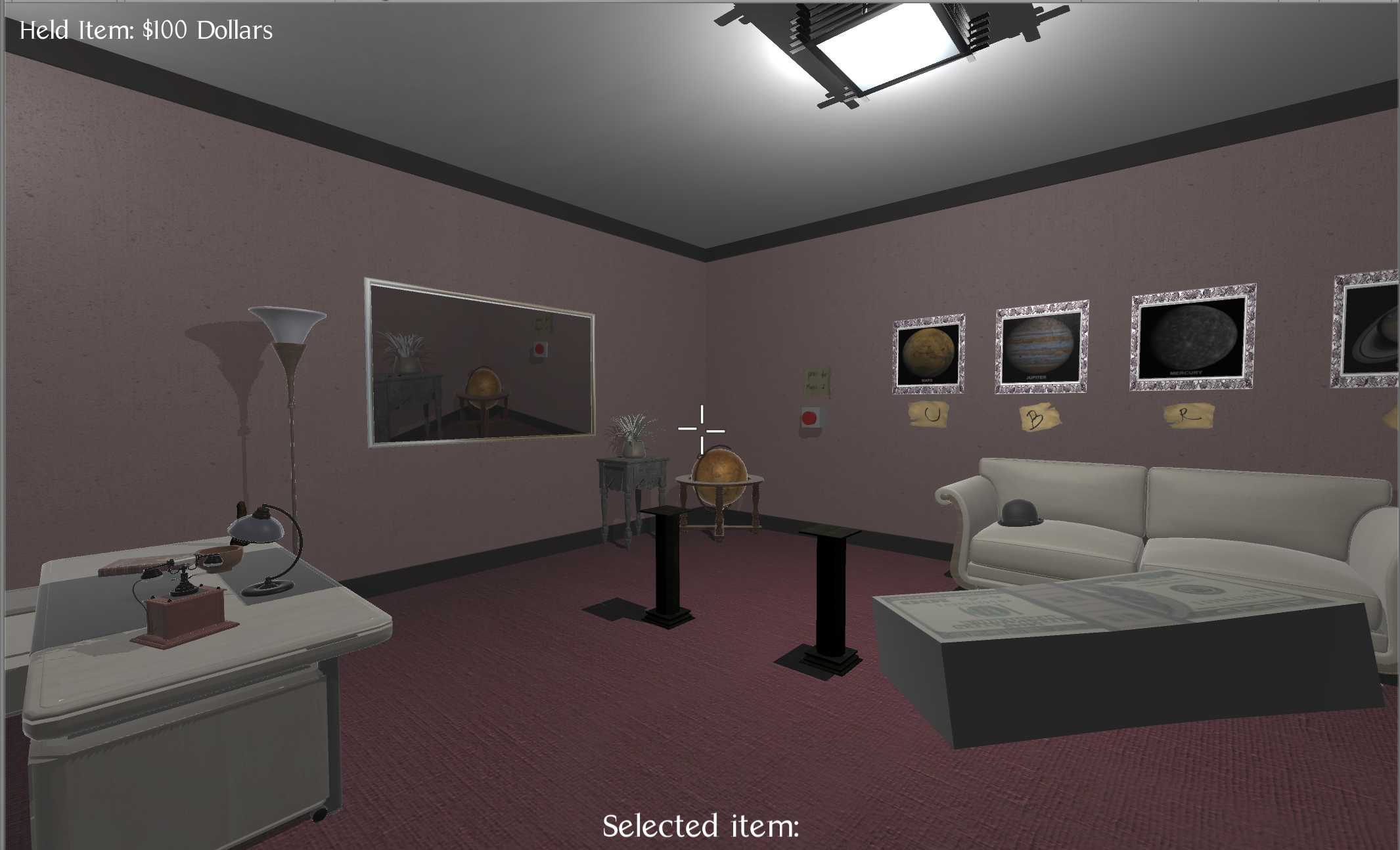
Builds: https://drive.google.com/drive/folders/0B-weBJf14mHxUkhIR1NRRVZSUk0?usp=sharing
Authors: Sydney Ayers and Tom Garncarz
Description: The Parodos Veil is a two-player Vive VR experience where one player wears the Vive headset (the Veil) and the other (the puppeteer) uses the Vive controllers to control and craft the Veil-wearer’s experience. The puppeteer is able to introduce different objects and sounds into the virtual world, as well as morph and change the world around the Veil-wearer.
Download: https://www.dropbox.com/s/69rbk069re377ts/parodos_windows_build.zip?dl=0
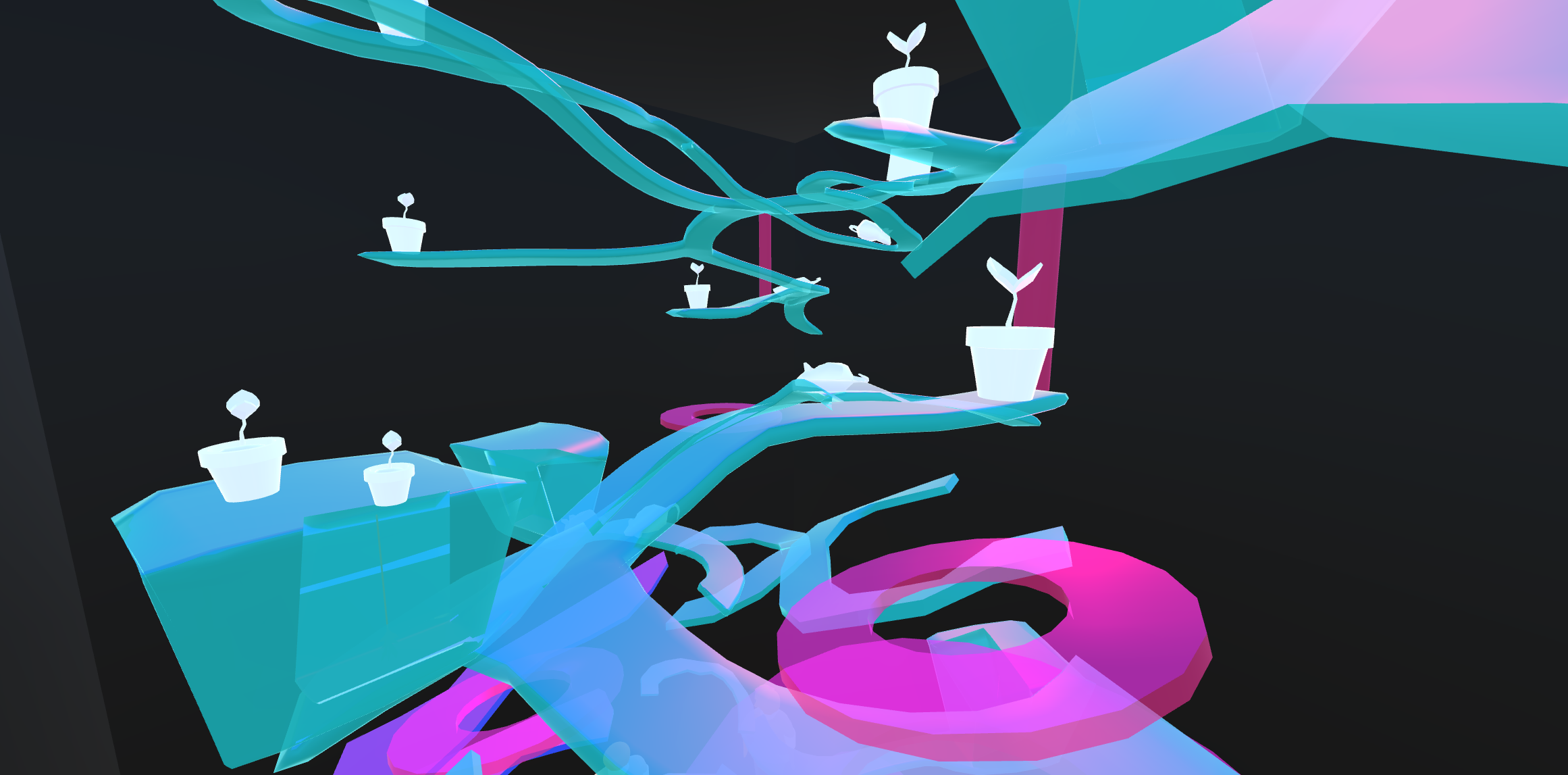
Navigate the cat condo network to drop items on the roaming humans below! Controls are WASD for moving, left and right mouse clicks for paw swipes, and the Space Bar to jump. How many humans can you destroy?
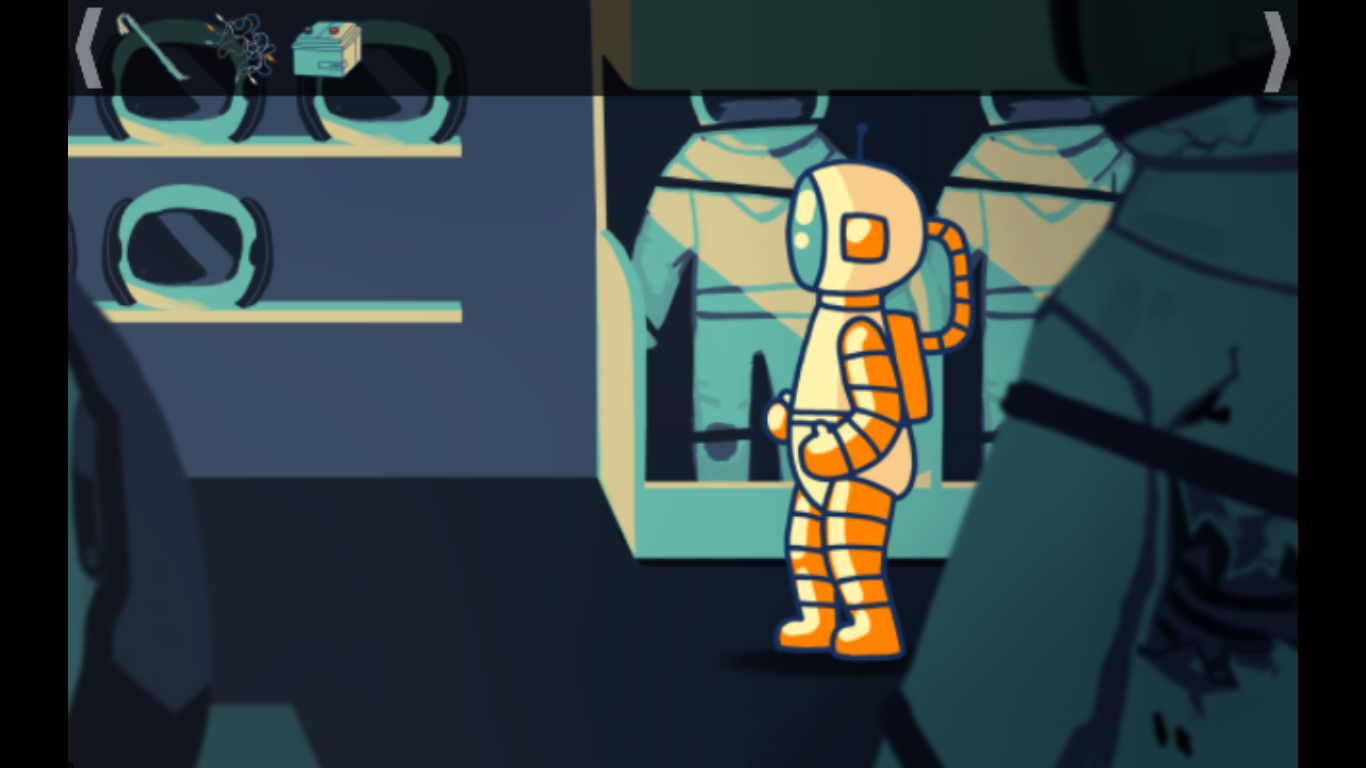
You are a park ranger called up to investigate the troubles of a camper in the midst of a blizzard. However, once you get there, you find that the camper is missing save for a few bloodstains and a trail of campfires leading away from the site. What discovery will you find at the end of the trail?
You play the game by moving with traditional first person controls – wasd and mouse. Warmth is your life in this game, and moving close to fires will keep you alive; stay out in the cold for too long and you’ll freeze to death.
Spoilers: There is no way to win the game, you will always die, if you make it to the end, there is the revelation that the camper had a run-in with a wild animal and you succumb to the same fate.
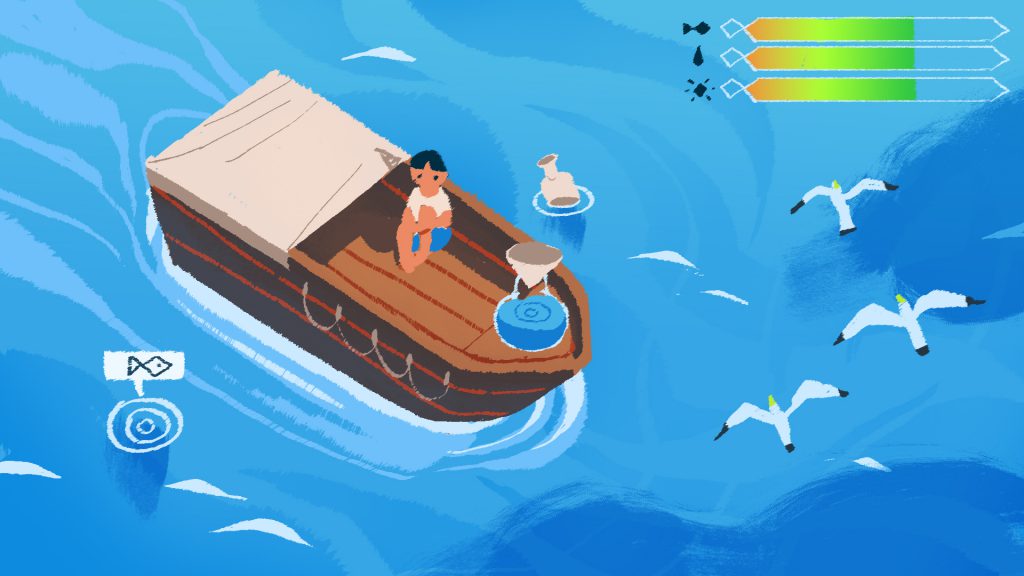
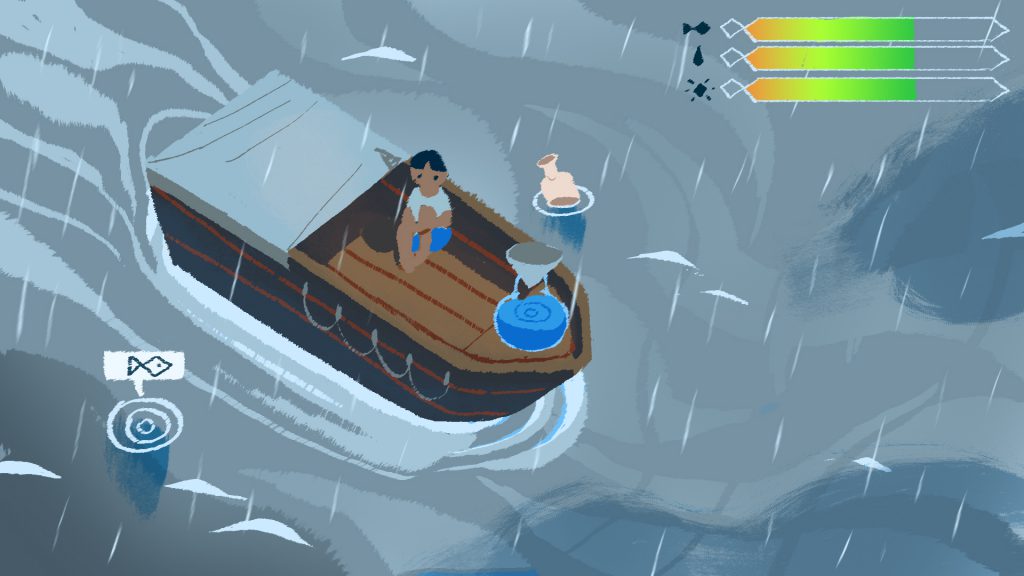
Global warming has flooded the planet and submerged everything underwater. You are lost at sea among the ruins of an underwater planet, and your goal is to stay alive for 10 days, upon which you will reach an outpost of fellow survivors and “win” the game.
Along the way, you pick up bottled messages from other people who are presumably in the same situation as yourself, lost and alone on the ocean. You can reply to the messages by selecting from pre-written options, but whether or not you ever get a response back is up to chance. “Sending a bottled message expresses a hope to find connection in a fear-filled world.”
As you float along, you may also come across junk objects and other items of the past that reveal to you the state of the world and the climate change apocalypse, since nothing will be explicitly revealed to you when you start playing.
You stay alive by performing actions that keep your hunger, thirst, and exposure at good levels, but these actions will no longer be the focus of the game (rather, the discovery/story/exploration aspect will be the focus.) These actions will be simply performed by clicking on various objects in or around the boat. If you hover your mouse over something that is clickable, it will have a highlight around the outline.
Random events that might occur include storms, shark attacks, and finding other boats.
Hi there,
We’ve decided to shift gears a bit and modify our idea for the final project proposal. Our idea was initially inspired from a mix of “escape the room” and “can’t drive this”.
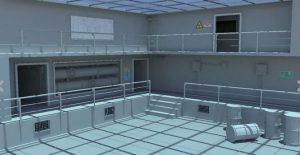
The game is 2 player, where one player has a VR headset on and the other player has a view of a desktop. The theme of the game is that you are trapped in a spoon factory and the only way you can escape is to construct the best spoon the factory has ever created. You find a series of clues left behind from past Spoon artisans, and you have to collect these clues to figure out the best spoon practitioner techniques. The game is fixed camera position, and the only thing the first player with the VR headset can do is select certain clues to read; this is where the second player comes in. The first player can’t read, so all they can do is select clues to present to the second player. The second player, conversely, can’t see but can read. Another catch to this game is that the second player can’t simply read aloud what the clues say: they must figure the clue out by themselves and send a 3-4 word response to the first player.
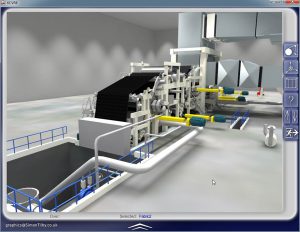
Overall, the goal of our game is to experiment with interaction with two players whose senses are not 100%. However, we also want to ensure that the game flows well, and that the cooperation of the two players enhances the game rather than making it just more frustrating. (Paolo has shown us some games where both players are also handicapped and must rely on each other to excel in the game, but their handicaps are completely unnecessary and the game eventually turns into a person A controls person B to do something that person A should have absolute control over)
As mentioned before, our inspiration comes from:
1) Can’t drive this
2) Keep talking and nobody explodes
Non-video game references:
1) Escape the room
2) Spoon making tutorials (lol)
3) Clue
Katamari Damacy:
Katamari: magical adhesive ball that becomes increasingly larger the more objects you stick to it.
Essentially the plot is King of the Cosmos destroyed the cosmos and so you (as Prince) must roll the cosmos up in a katamari to rebuild the universe.
Noby Noby Boy:
nobi: stretch in japanese.
nobinobi: carefree in japanese
Controls a long stretchy character called Boy. Points accumulated by stretching. Points can be submitted to “Girl” and “Sun” characters. The “Girl” begins on earth and stretches throughout the universe. She has officially united the universe by stretching all the way around the universe.
Wattam:
Wattam is a game about friendship and holding hands. You play as a cube called Mayor. Essentially the player gathers “friends” which are sentient objects and creatures like sushi, mushrooms, and toilets. A lot of this game is finding how these friends can work together to achieve self made goals.
COLOR AND STYLE REFERENCE

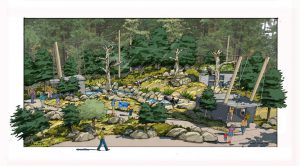
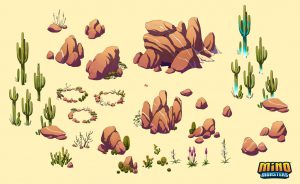
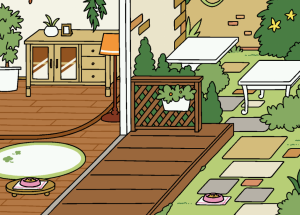
CHARACTER REFERENCE
![]()



STYLE GUIDE
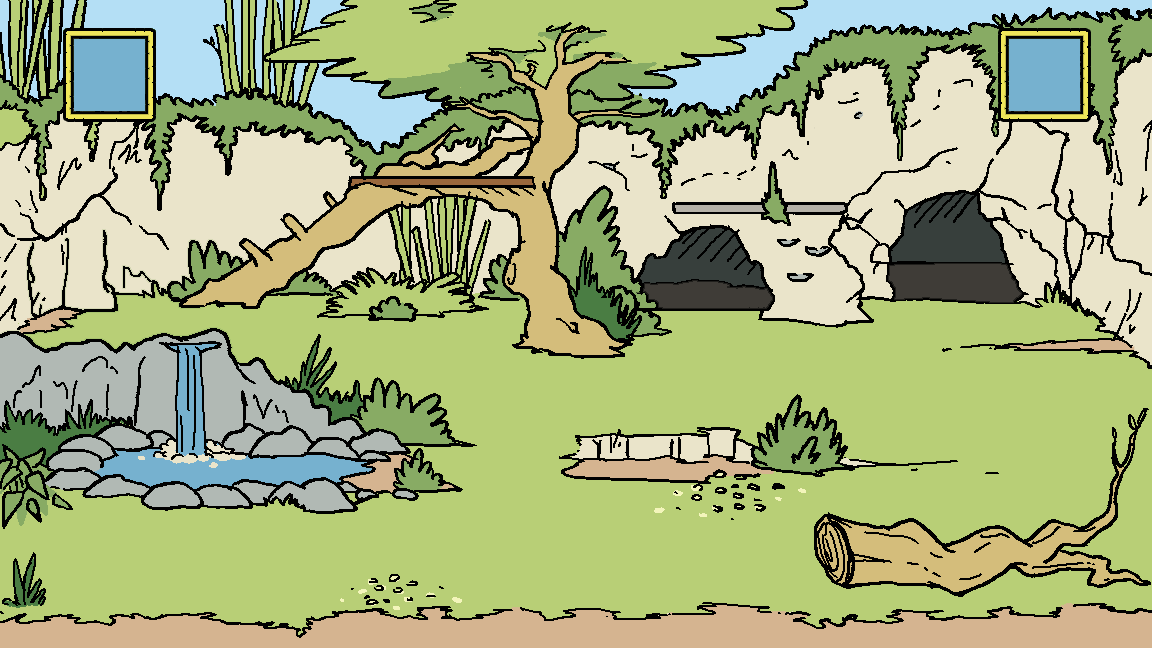
STORYBOARDING
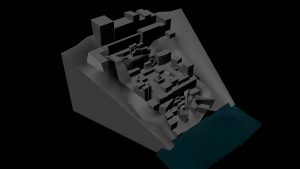
model update ^
Changes:



New Proposal
First Person game. On foot.
The game will take in your race (via picture or some device) as well as your name, and then will choose one of 4 avatars matching closest to your complexion. You will not have a choice in which avatar is chosen.
You will start in one of the 4 “sides of town”. Each avatar has a corresponding side of town. The areas are not completely distinguished but serve as more of a spectrum between very high-end to very impoverished and run down.
There is a dance competition that evening and your friend is injured. You must have a team of 3 others to compete. Your goal is to find the 3 of best dancers in the town by 6 pm and recruit them for the competition that afternoon. You must find them through talking and asking others, some will be more willing to help you than others.
Your avatar will impact the responses you get from people and which non-player characters will help you find who you’re looking for. For example, as Avatar1, the homeless NPC might yell at you to go away. But as Avatar2, he might tell you where the person is. As Avatar3, he may lie and lead you in the wrong direction.
Dialogue boxes
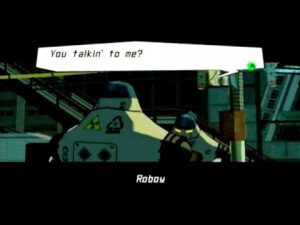
Proof of Concept
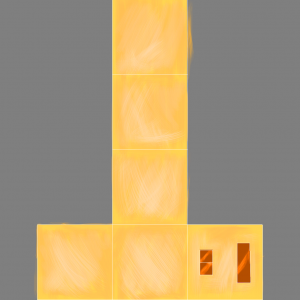
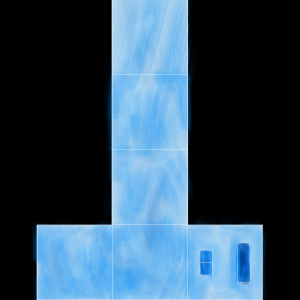
“Farbs” is a pseudonym of Jarrad Woods, an indie developer who became prominent after quitting his job at 2K Australia using a video game (I may have quit my job). This was inspired by the rising popularity of indie games as a form of expression, and gave him his start as Farbs.
ROM CHECK FAIL:
ROM CHECK FAIL is a 2D survival game that after a short period of time, swaps between classic 2D games (Legend of Zelda, Mario, Pac-Man). Like a typical survival game, enemies will spawn, be it Koopas, Ghosts, etc. and the player must defeat them to gain extra lives. The twist though, is that not only do backgrounds/sprites change, the gameplay changes. For example, when you’re Mario, you can run side to side, jump, and your main method of defeating enemies is to jump on top of them. When it swaps to Link, all of a sudden you’re able to walk up, down, left, right, and your mode of defeating enemies is by slashing them with your sword.
Captain Forever:
Captain Forever is one game in a series of four space shooter games. It’s name comes from both the development process – new versions are constantly being developed and released, and from it’s potentially endless gameplay. In addition, the first game costs $9, and after that one time purchase, players gain access to any future iterations of the game. Captain Forever’s gameplay is in-line with most 2D space shooter games, you can fly across a nearly endless plane of space, defeating enemy ships, and salvaging their parts to improve your own ship. The controls took a little getting used to (W/S for forward or backwards, and A/D to rotate your ship), but were fairly intuitive.
Playpen:
Playpen is a point and click – choose/create your own adventure game. You can choose to play as a passive viewer of the scenes, going through a multitude of different paths, or you can draw your own scenes and story at which point, it becomes available for other players to play or build upon. There were some…interesting scenes, almost like a mad lib sort of journey. It was somewhat confusing, but really intriguing that you can add whatever you want (within reason, the game is built around MediaWiki technology, so past scenes are recorded and can be rolled back).
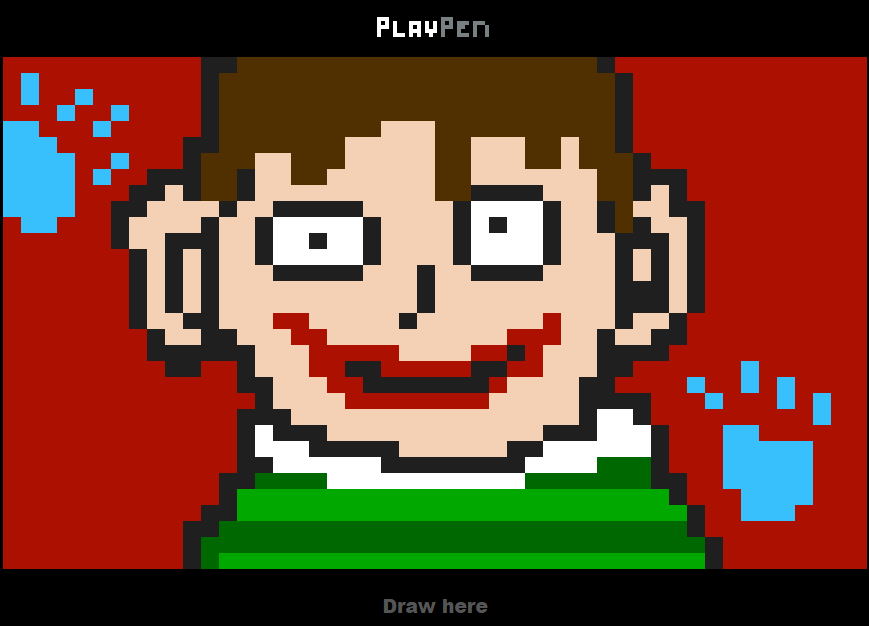
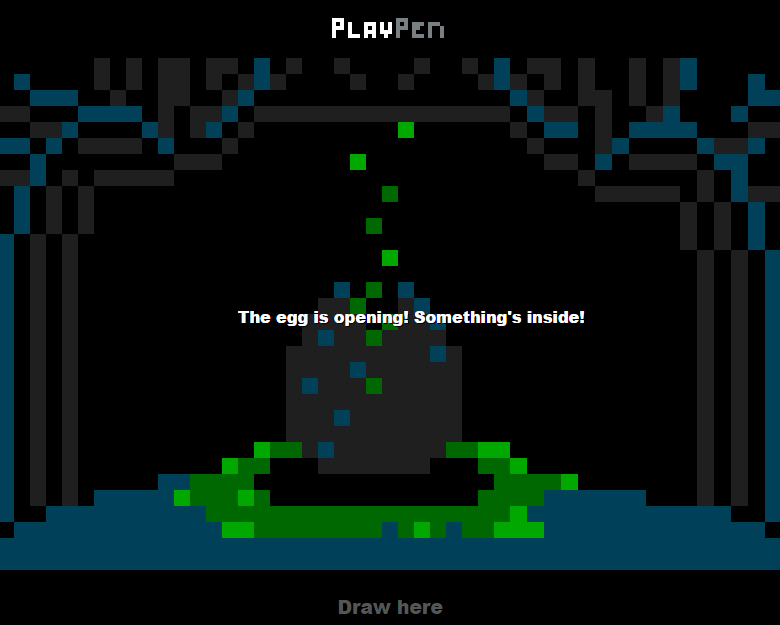
In 2013, the Klondike Collective was founded as a spontaneous effort between friends interested in curating, creative experimentation, carving an identity that straddles the gaming and art spheres, creating interesting interactions, but most importantly to make “cool stuff” unrestricted by convention and form.
The Klondike Collective has grown into an aqueous group made up of 10 people, each with different motivations, aesthetics and intentions. In common they have the collective itself: peers to make things with, to share things with, to talk and discuss and exchange with. They are decidedly undecided in their purpose they embrace their mantra: “There are no rules to Klondike.”
They’re games deal with themes of ambiguity, subtleties, mundanity, cultural and aesthetic vignettes, parody, adventure, existentialism, fantasy, curiosity and cornerstones.
Mu Cartographer by Titouan Millet
“A contemplative game experience that combines colorful sandbox and experimental treasure hunt.”
Orchids to Dusk by Pol Clarissou
“With only a few minutes to live, you explore as a desperate astronaut who has nothing but the vast plains that stretch before her, a quickly depleting oxygen supply, and soothing electronic melodies which set the tone and keep her company.”
Vignettes by Armel Gibson (unreleased)
” A toy-ish experience that engages with the whimsical, shape shifting potential of the digital world. Commonplace objects are put in the forefront as both visual elements and narrative devices . Through intuitive exploration, the player reveals the the theme and meaning of the game gliding between a series of interesting interactions.”
When Brough was young his family bought a Tandy computer with BASIC installed. He spent many hours making games to share with his family. While he tinkered with BASIC, Brough often encountered bugs. He’d make a small change in the code, and a game would break in an interesting way. But instead of immediately fixing the error, Brough became fascinated with the bugs themselves.
“The idea that a bug could produce strange and interesting effects,” he says, “is a mythology that I like.”
868-HACK
A very interesting game that uses a dungeon like game mechanism. The goal of the game is to get through all 8 levels of the “dungeon” and aim for a high score. Along the way the player can collect resources and defeat viruses/monsters to survive. I thought it was fun, but also difficult.
Corrypt
This is one of those puzzle games, where the player needs to move boxes/things around to get to get through the dungeon and move on to the next stage. I liked how it added more complicated things like items and other characters in the dungeon, making the game more interesting.
“The way [it] works, you’re not sure if it’s something wrong with the game, or if it’s something intentional,” Brough says. His smile fills my Skype window. “I’ve had people e-mail me saying ‘there’s a bug in your game,’ and then describing it exactly as it’s meant to work.”
Vesper.5
This game looks a lot like the last game, and seems like another dungeon puzzle like game. However, it actually works very differently. In this game, the player can only move one spot per day. And takes a total of 100 days in order to reach the end. Throughout the dungeon, you can observe different items (but will delay getting to the end), but I thought were interesting t0 look at.
Installation: For this visual prototype, I wanted to get a working pipeline from tilt brush to unity.
For this game, I want to work with assets I have collected over the last year with my nine year old collaborator. Together, we want to create an exploration of youth and imagination as the player explores a landscape built entirely out of the imagination of a child.
Research Question: How can we use VR and the very accessible tools for VR development to share childhood imagination with both children and adults.
Game references:
Non-game references:
A VR game where the player is the voice in a crazy monk’s head, and they must sway him to do their bidding by impersonating God.
We do all manner of terrible things in games. Violence is commonplace, and is even encouraged in shooting games. How does this change when we have to speak aloud the things we do in VR? What does it feel like to command a virtual person to do something awful? Who do we become when we say “pray to me”, or “kill Brother Emmanuel”?
What can we be convinced to do if we’re told it’s not real?
The game mechanics will heavily rely on spoken commands, supplemented by physical hand controllers in a room-scale VR setting.
I want players to rationalize murder, consciously or otherwise.
The experience will be designed to slowly build the player’s telling them what they’re doing is “OK”. If this is effective, it could result in a moment of emotional catharsis, where they become aware that there’s (symbolically?) blood on their hands.
The project’s main influence is a text adventure called Vespers.
Another is a game called I Have No Mouth, and I Must Scream,
which is a point and click adventure / horrifying novel by Harlan Ellison.
Finally, my last reference is an awful, old CRPG called Nethergate.
Not for any of its gameplay elements, but for its portrayal of magic,
and for its alt-historical Druidic / Celtic / Roman interactions.
Also, Ubik and Do Androids Dream of Electric Sheep? by Philip K Dick are major influences, due in large part to Philip K Dick’s rather loose relationship with reality.
My other non-game reference is also literary, but of a different kind. The strange, awful illustrations in Illuminated manuscripts will contribute heavily to the Revelations-esque imagery I intend to use in representing the game’s ending.
Thriller Redux Pt.2 is about appropriation and the death of the music video. Thriller, the twelve and a half minute music video, was in my opinion Peek Music Video. In this piece, a group of Goofy characters performs the Thriller Dance while destroying a large model of a TV. This is my second experiment with creating a Music Video Game.
Why Goofy? The character Goofy is Disney’s appropriation of black culture. Michael Jackson and Thriller is the world’s appropriation of black culture.
This work also explores some technical items I want to achieve in my final project. Parts of the environment were created using a Voxel-ish method and are all elements affected by physics. The environment is fully explorable and can be moved by the game actors and navigated on by the players.
My final research will differ from my current and previous works. The project will explore an endless voxel environment that the player can explore, fall onto, run on, and manipulate in real-time without consequences. My final project is to create a Music Video Game targeting Game Consoles and Mobile Devices.
FINAL PITCH DECK (I can’t get the iFrame of the deck to stay in the post)
Reference Games: Canabalt by Adam Saltsman, Velocibox by Shawn Beck, and FLOW by thatgamecompany.
About Cory Arcangel: Cory Arcangel, born May 25, 1978, is a Brooklyn, New York post-conceptual artist who makes work in many different media, including drawing, music, video, performance art, and video game modifications, for which he is perhaps best known. Arcangel often uses the artistic strategy of appropriation, creatively re-using existing materials such as dancing stands, Photoshop gradients and YouTube videos to create new works of art. His work explores the relationship between digital technology and pop culture. His website can be found here.
Super Mario Clouds– Arcangel’s best known works are his Nintendo game cartridge hacks and reworkings of obsolete computer systems of the 1970s and 80s. One example is Super Mario Clouds (2002), a modified version of the Super Mario Bros. video game for Nintendo’s NES game console in which all of the game’s graphics have been removed, leaving only a blue background with white clouds scrolling slowly from right to left.
Bowling Series– Arcangel created Various Self Playing Bowling Games (aka Beat the Champ) (2011) by hacking various bowling video games (for game consoles from Atari 2600 to Nintendo GameCube) to throw only gutter balls. Arcangel says, “But throwing a gutter ball is just humiliating. That’s what makes the piece so ridiculous, but also sad and even oppressive. The failure seems funny at first–then it flips.
Super Mario Movie– In collaboration with Paper Rad, and extended off of Arcangel’s ===Totally Fucked=== (2003), ===Super Mario Movie=== (2005) is another modified NES Super Mario Brothers cartridge, programmed to be a 15-minute video and is available for download for an NES emulator. The video consists of a serious of original 8-bit tracks, original texts and “dialogue” boxes, and a complete rework of the background images and coding via 6502 binary.